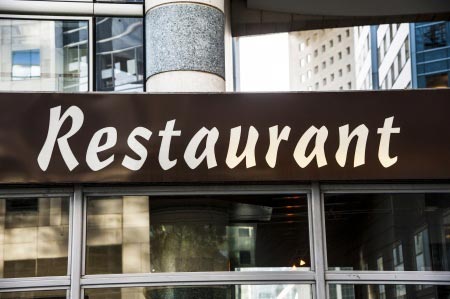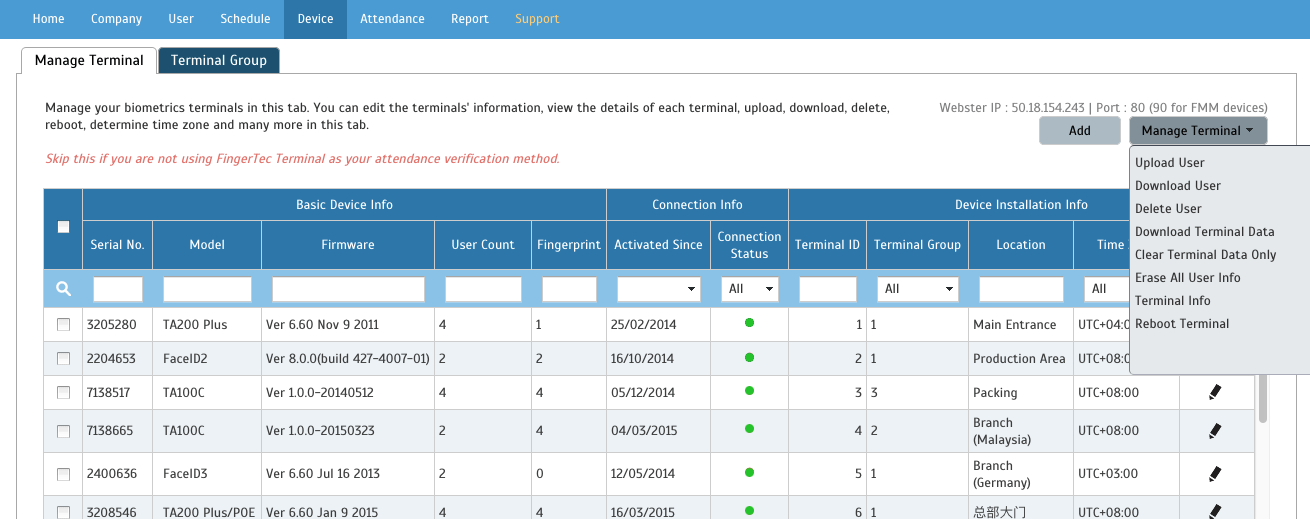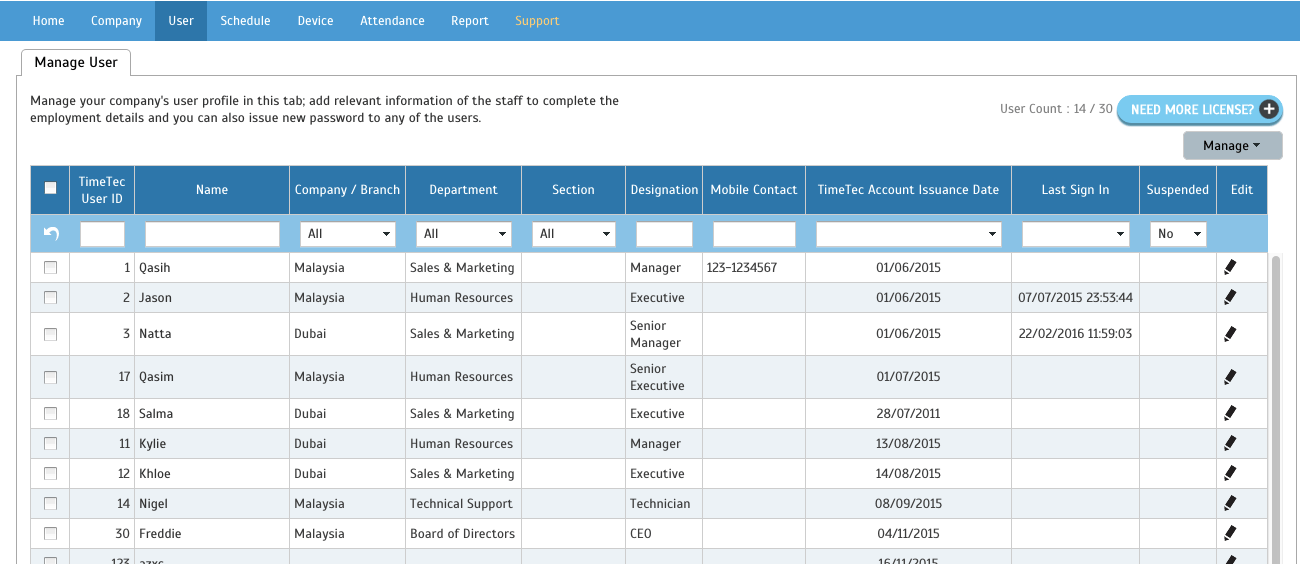| TimeTec has merged all of its solutions into www.timeteccloud.com, click to |
| IMPROVING STAFF MANAGEMENT IN RESTAURANTS |
| Through Online Time Attendance System |
| Download PDF |

In the country, the industry's job growth outpaced the nation's overall economy in 13 consecutive years from 2000 to 2012, proving its ability to sustain itself even during periods of economic recession. The restaurant industry is projected to employ 13.1 million people (roughly 10% of the U.S. available workforce) in 2013 and market trends predict that it will continue to rise by 9% over the next decade.
The previous statistics are also indicative of global trends in the food & beverage industry, particularly "full-service" (conventional) and "quick-service" (fast-food) restaurants, and managing the large number of employees involved often implicates the same, universal issues that plague other industries. This includes concerns such as buddy-punching, tardiness, absenteeism and payroll calculations. There are also other issues at play, in which some are usually only existent in the restaurant industry as the operations involved are different from most businesses. All of these concerns, however, can be remedied or at least brought down to a minimal level.
This article will continue to discuss the main problems faced when managing these restaurant employees, as well as examine how TimeTec solutions, particularly online time attendance software, can provide relief to management when dealing with these concerns.
One of the chief concerns circulating in the industry is often the level of technical expertise present in current restaurant employees that turns implementations of even slightly complicated systems into a monumental exercise of ensuring adherence to the said system. This issue is particularly more prevalent in quick-service restaurants as compared to full-service ones, but it is nevertheless still a major concern in both situations. On average, more than 60% of the staff in the restaurant industry are high school graduates without a college degree, and this group of workers is not normally comfortable to use systems that seem complex to them (Fields, 2007).
Thirdly, the variance in staff tasks also makes it hard to track these employees' true amount of work put in. This scenario occurs because, in most establishments, most front-line workers are not task-specific in the sense that they only have one or a few job responsibilities, but instead rotates between having to serve other areas of the business (NPD Group, 2013).
For example, in a quick-service restaurant, a full-time waitress may have to wait tables between 2 pm to 6 pm, answer delivery calls between 6 pm to 10 pm, and clean up shop between 10 pm to 11 pm. This schedule will then be rotated with another waitress for another day. The complexities involved often causes headaches to management, both in trying to ascertain the workers' true amount of hours worked as well as the scheduling of employee tasks.
The next section of this article will discuss how TimeTec solutions can remedy these issues as well as the previously mentioned ones above, and ultimately improve a restaurant's overall business operations.


*Products from FingerTec Worldwide, a provider of biometric solutions for time attendance and access control, will be used as examples to explain how these issues are solved.
Pertaining to the initial problem of low technical expertise among employees, and their reluctance to use complicated systems, the real trouble lies in finding a system that is both easy-to-use but still holds the adequate features needed for the business. Previously, punch card systems were heavily used as it did its job in recording attendance, but this has given headaches to management when trying to compile those data for payroll calculations. On top of being time-consuming on both fronts (the recording of data as well as its further processing), this system has also led to problems such as buddy-punching, whereby a worker dishonestly clocks in for another worker without the management's knowledge. This is where the biometric solution helps the most.
In terms of processing the data for viewing or payroll calculations, the operations are also made easier to process as all data recorded by the device will be sent to the online software, TimeTec TA Time Attendance, for automated management purposes. Furthermore, the user-interface used in both the device as well as the online software are simple to learn and operate, requiring minimal technical know-how from the restaurant staff.
Moving on to the second major issue in the restaurants industry, there needs to be a way to minimize the operations involved when having to schedule extra workers during peak periods. This issue is exacerbated by the fact that there is a high turnover rate among restaurant staffs, which leads to not just a high number of changes in employee scheduling but also during enrollment and removal of workers from the system. It is simply inefficient for the management to spend significant amounts of time on these operations when there are also other things to worry about in the business. Using TimeTec system helps to relieve this.

Manage all biometric terminals in one centralized page.

Manage all employees easily; permanent or part time employees.

Scheduling issues are also tackled with the software, as TimeTec TA can support up to 999 schedules that can be easily configured to suit individual business needs, all in a friendly UI that makes everything look easy to the user.
Last but not least is the issue of rotating variable job tasks among workers' schedules. Originally, this practice is done to ensure that all front-line staff will divide their work evenly between tasks such as waiting on tables, answering calls and clean-up duties. Although the intended goal of this practice is admirable, it is nevertheless painful for management to consistently come up with new schedules, especially with the high turnover rates and part-time staffers in the industry. As previously mentioned, these problems are brought to a null with automated data management software such as TimeTec the online time attendance management application that makes it both fast and easy to make scheduling changes.
Monitoring and tracking staff attendance is easy, as all data are automatically updated into TimeTec TA. Administrators can also suspend users for a variety of reasons or durations which make it easier to accommodate peak hour workers.
Implementing a time attendance system such as the one from TimeTec TA can prove to be very beneficial to restaurants and is particularly crucial to the industry as it is rather labor-intensive. On the whole, the improvements that can be achieved with the system helps to do more than just reduce the time and effort spent on "traditional" time & attendance practices, but also to ensure efficient allocation of the company's resources.
At the end of the day, costs go down while profits go up as staff can concentrate on other value-adding tasks for the business. With TimeTec TA, all data is available online, it's transparent, it's accessible from anywhere, and it's ROI measurable. By subscribing to an online time attendance system like TimeTec TA, it will provide customers with more options in terms of data collecting devices like the use of a mobile app on smartphones and PC clock-in through any PC's internet browser.
As the restaurants industry moves ahead in the future, efficiency will be key for all businesses to grow and having a reliable time & attendance system will push any organization in that general direction. Experience TimeTec TA for free at www.timetecta.com

| References | |
| Brawley, W. (2011). Restaurant Owners Uncorked. Seattle: CreateSpace Independent Publishing Platform. |
National Restaurant Association. (2013). 2013 Restaurant Industry Pocket Factbook. Washington: NRA Washington. |
| Schmidgall, R., Hayes, D., & Ninemier, J. (2002). Restaurant Financial Basics. New Jersey: Wiley. |
NPD Group. (2013). Restaurant Industry Trends. San Francisco: www.npd.com. |
| Fields, R. (2007). Restaurant Success by the Numbers. Berkeley: Ten Speed Press. |